Having your horse stolen right out of his paddock, get lost during a natural disaster or wander out through a broken fence are some of a horse owner’s worst nightmares. Making a bad situation even worse is locating your missing horse and not being able to prove he’s yours.
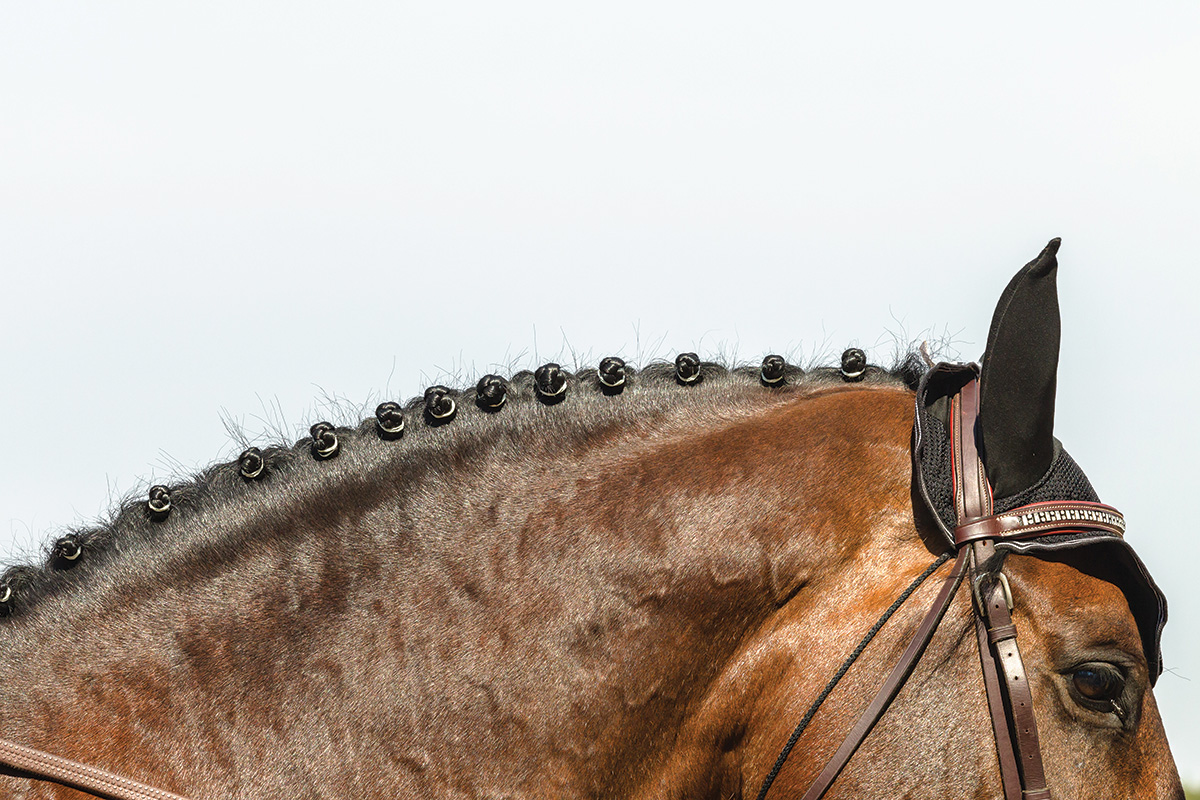
Permanent ID Options
Jean Anne Mayhall, president of Microchip ID Systems, Equine Division, has 30 years of experience in the permanent animal ID industry. She explains there’s only one type of microchip recommended for horses.
“It’s a 15-digit universal chip known as an ISO chip,” says Mayhall. “Several companies make ISO microchips; however, not all chips are created equally, so do your homework! Look for lifetime warranties and a reputable company that understands and caters to the horse industry. A microchip is a one-and-done item that should last for the life of your horse. Make it count.”
Kris Hiney, Ph.D., an assistant professor and extension equine specialist for the Oklahoma State University Department of Animal and Food Sciences, adds that horse owners should also talk to their veterinarian to make sure they’re using a chip that’s compliant with current technology.
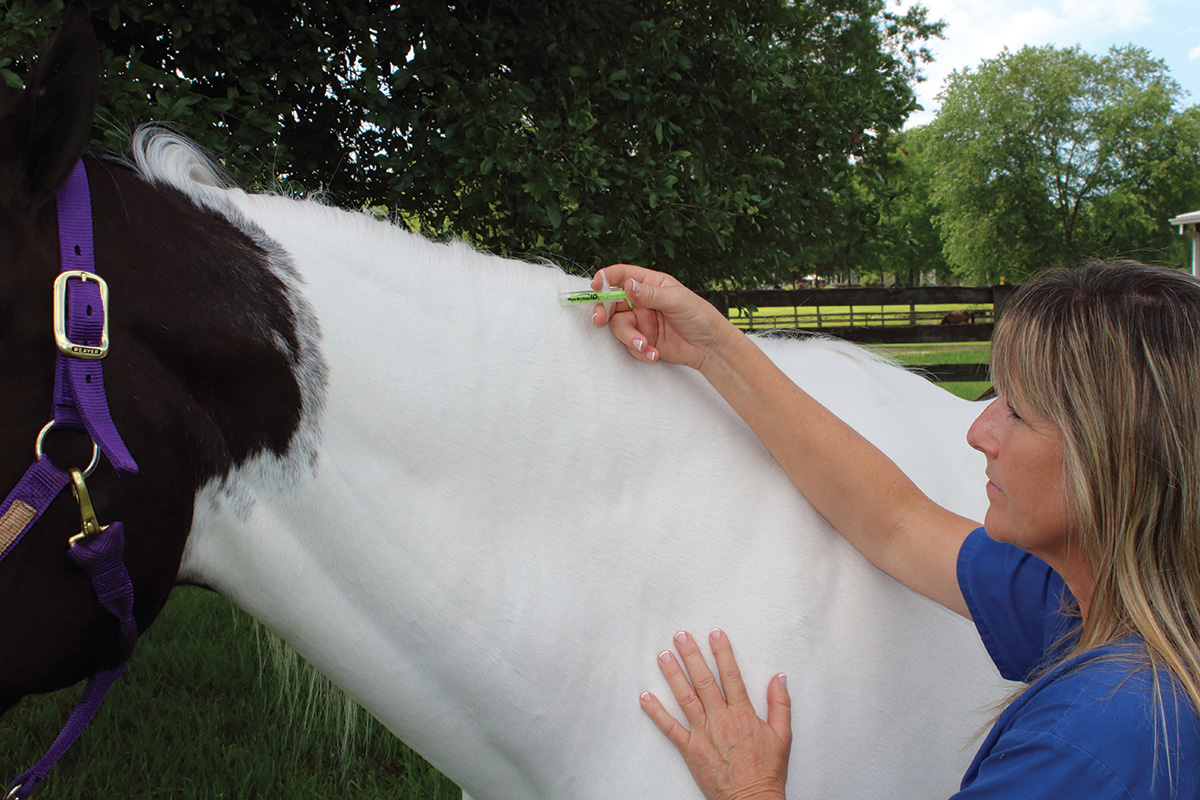
Debi Metcalfe, founder of Stolen Horse International/NetPosse.com, a 501(c)(3) nonprofit organization, has been an outspoken advocate of all types of equine ID for more than two decades. She suggests that horse owners combine microchipping with a permanent visual ID.
“There’s no such thing as a perfect ID that works in every situation,” warns Metcalfe. “Not even a microchip. Each type of ID has pros and cons. Our preferred ID combo is a microchip that can be checked 24/7 and a visible ID, such as a freeze brand, which can be seen easily. You can visually ID the horse and prove ownership to law enforcement with a stroke of a scanner.”
How Microchips Work
Microchips essentially work the same whether they’re inserted into a dog, cat or horse. For equines, a unique 15-digit number is encoded into an ISO 11784/11785-compliant microchip when it’s manufactured.
This number can’t be altered and is permanently attached to your horse once chip implantation occurs. A chip reader or scanner activates the implanted chip and displays the chip’s number.
“Microchips operate using a radio wave frequency to send a tiny signal to a microchip scanner,” explains Mayhall. “In the past, chips operated at 125 kHz. However, for many years, the only type of chip recommended for horses operates at 134.2 kHz. They are recognized worldwide and can be read by universal scanners across the U.S. and around the world.”
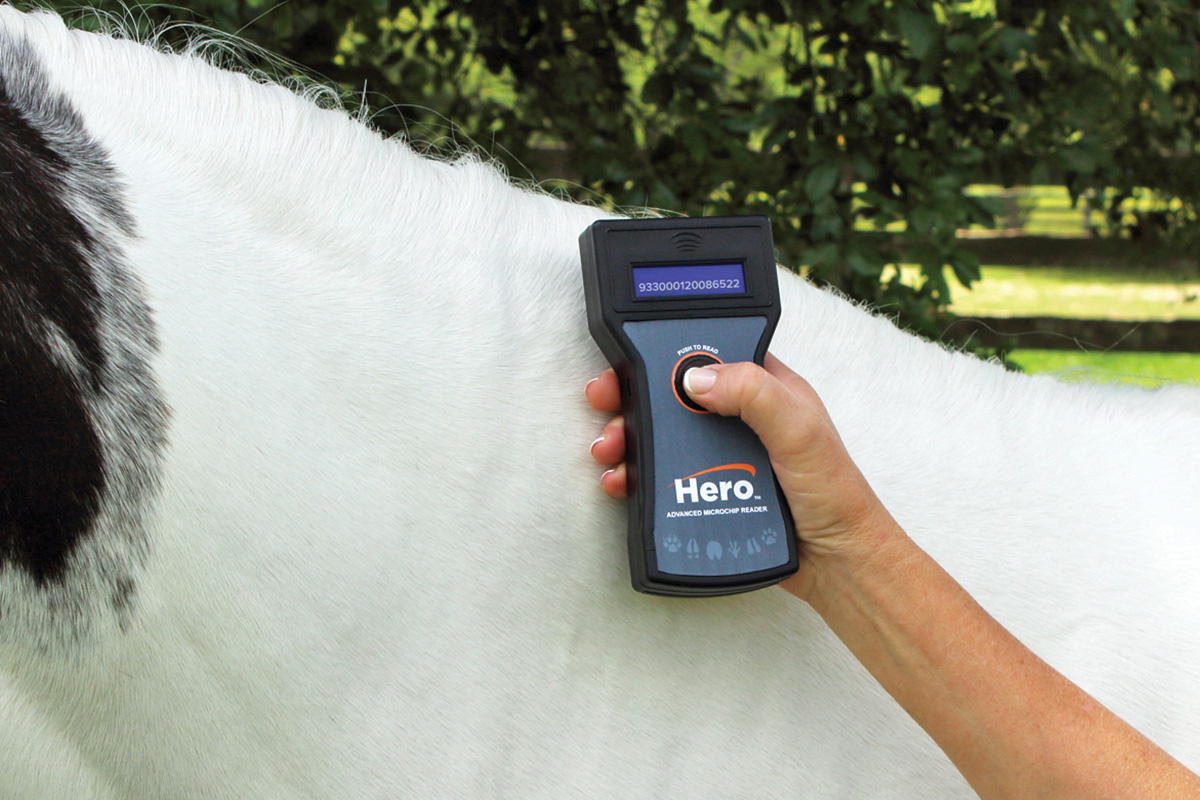
However, it’s important to realize that microchips aren’t GPS tracking devices. These two technologies are very different. GPS devices require batteries and must connect to a satellite-based navigation system, while microchips don’t require batteries and remain inactive until receiving a compatible signal from a nearby microchip reader.
You can scan a microchip an infinite number of times with the same consistent result—your horse’s ID number. The chip won’t wear out and shouldn’t stop working throughout your horse’s lifetime.
Also read – Prepare Your Horse for a Safe Landing
“Construction of the chip is the key to its quality,” Mayhall emphasizes. “Not all microchips are made the same way or with the same care. As with any product, you should choose a chip manufacturer based on your research. Ask questions. Get references from others in the horse industry.”
Inserting the Chip
Microchipping your horse can be done at any age, so the younger you chip, the sooner your equine friend has another layer of identification should he become lost or stolen. The entire insertion process is relatively quick, painless and cost-effective.
Choose from standard microchips or the newer mini microchips. Mini chips are about the size of a grain of rice, allowing for a finer needle and even less discomfort for your horse.
“Inserting a chip is really easy,” says Hiney. “They insert the chip with a needle and syringe into the nuchal ligament [neck] of the horse. It’s very low key, and the process is completely safe. It’s also a very cheap and painless process that gives you security and peace of mind.”
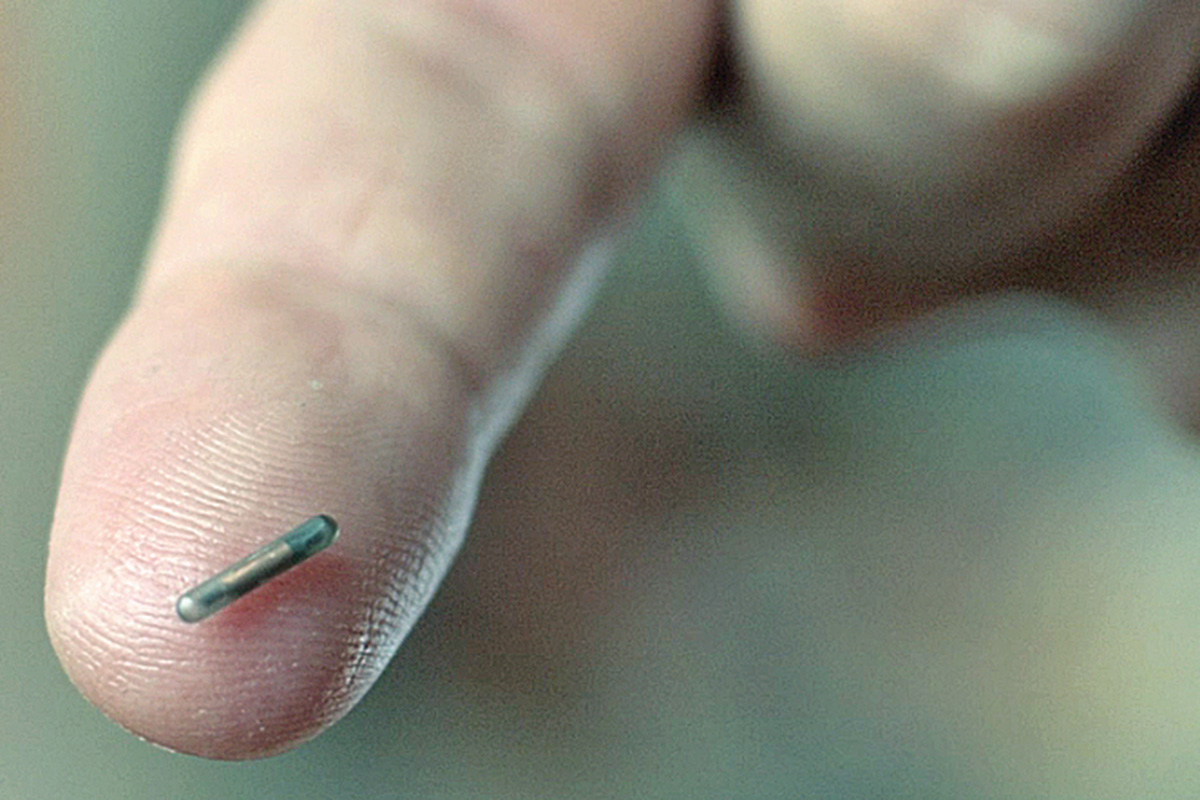
The process is minimally invasive and can be performed in minutes by your veterinarian.
“Once inserted, the microchip can’t easily be altered or removed, making it more permanent than tattoos, brands or other forms of identification,” says Emily Weiss, Ph.D., vice president of ASPCA Equine Welfare. After the chip is placed, you can’t see or feel it.
“Millions of horses are chipped around the world,” says Mayhall. “Microchips for horses are so safe and reliable that equine entities and veterinarians are choosing them as a smart and humane standard of care. If your horse is chipped properly, it’s like any other injection. Most horses don’t even flinch. The key to being sure that the chip can do its job is to register the horse and microchip number—and you—in an equine microchip registry.”
Registering the Chip
Currently, some competitive organizations and breed registries require microchipping to easily identify individual horses. The Jockey Club requires microchipping of all Thoroughbred foals born in January 2017 or later, and the U.S. Equestrian Federation and U.S. Hunter Jumper Association began requiring microchip identification in December 2017. If your horse competes or participates in venues that require microchipping, you must register your chip with these organizations.
“Once the microchip is implanted, the horse’s caretaker needs to register with the microchip’s manufacturer,” says Weiss. “Without registration, the microchip number isn’t linked to any useful data. It’s important to keep your microchip contact information up to date should you move or change phone numbers. If that information is outdated or incorrect, it’ll be difficult for a caretaker to connect with their horse, especially during disasters.
“All ASPCA Right Horse Partner organizations are required to microchip all horses,” she continues. “Our Right Horse Industry Partner, Microchip ID Equine, works with us to help assure that partners not only have access to chips and registration, but that all horses can be enrolled in a safety net program to help keep that horse supported for life.”
In 2018, the ASPCA partnered with the American Horse Council to help fund the development of a database of all registered equine microchips. HorseLookup.org helps reunite horses with their owners during catastrophes by centralizing microchip registration information and flags a horse that’s part of a safety net program. Safety net programs list the people willing to help horses who’ve become at-risk to further the goal of ensuring all equines have good welfare.
“Most importantly, horse owners need to register the chip as soon as they get it inserted into their horse,” says Metcalfe. “You’d be surprised at how often the chips aren’t registered. Also, if you sell a horse, make sure the new owner works with you to transfer the chip into the new owner’s name.”
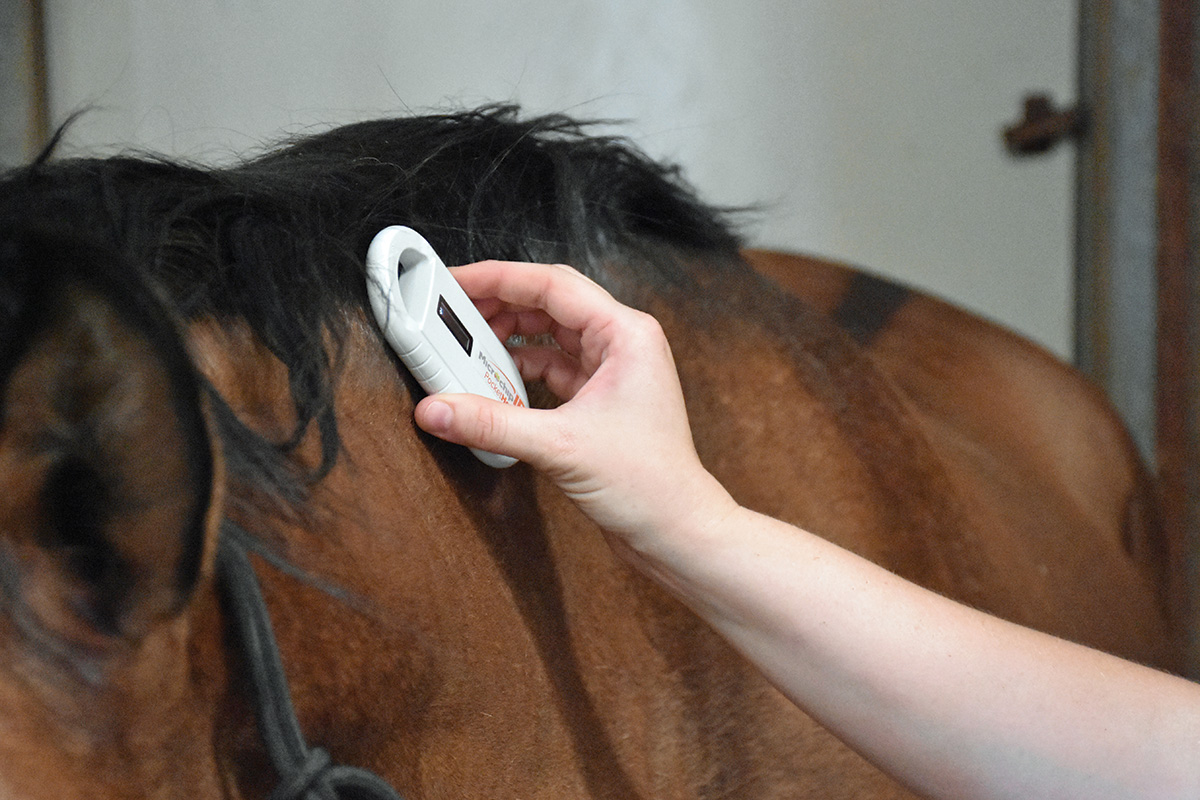
Metcalfe’s NetPosse ID registry for equines lets users upload pictures, detailed markings, Coggins papers, bills of sale and other paperwork that helps prove you’re the horse’s owner by forming a trail of ownership. This data can be especially useful when there’s a dispute over who owns a found horse.
“There are so many situations that I have seen over 24 years of working with victims in the field where having a microchip would have made ownership disputes so much simpler and less stressful,” Metcalfe says.
Other Benefits
Besides identifying who owns a found horse, there are numerous benefits of microchipping. Protecting against theft, tracking competition eligibility, preventing fraud, tracing a disease outbreak, monitoring a horse’s welfare, and reuniting lost horses with their owners are just a few of these benefits.
“Microchipping is done for a variety of reasons,” explains Hiney. “One is integrity of competition. There are a lot of bay horses in the world, so this ensures that the correct bay horse is competing that day. Beyond the show ring or racetrack, we encourage their use in case of theft or accidental loss, such as in the face of natural disasters. This makes it easier to reunite horse and human.”
In cases where horses are lost during natural disasters, there are usually intake depots where people will scan any found animals for microchips.
“If a horse is lost in a disaster, then the horse can be scanned by people who are running the depot,” Metcalfe says. “I’ve also dealt with many cases where there was a mistake made by workers on large farms or by vets who treat the wrong horse because so many are identical. Think Friesian, for example.”
Microchips act almost like a social security number for your horse.
“It’s a critical, unique identifier that only your horse carries,” says Mayhall. “In cases of loss, theft or natural disaster, a registered microchip can save the day! Microchips are required now for most sporting events, universal equine passports, proof of ownership, adoption, and so much more. In short, given the minimal cost and lifetime benefits, there’s no reason not to chip and register your horse.”
Registering Your MicrochipRegistering your horse’s newly inserted microchip is the most important step of the process and increases the likelihood of recovering your horse if he’s ever lost or stolen. Include all your contact information and always keep it (as well as any alternate contact info) current on your registration. Most equine microchip databases offer lifetime enrollment for a single fee. This registry is for Thoroughbreds only, and there’s no fee through Interactive Registration. ◆ NetPosse ID Registry by Stolen Horse International, Inc. Registration for this worldwide database requires a one-time fee of $20 and includes additional uploads, such as photos and files containing bill of sale, health certificate, Coggins paper, breed registration, and other documents proving ownership. Registration for any brand of microchip requires a one-time fee of $24.95 and includes free LifeTrac membership, nationwide SearchALERTS and Documents To Go storage. |
This article about microchipping your horse appeared in the November/December 2021 issue of Horse Illustrated magazine. Click here to subscribe!





